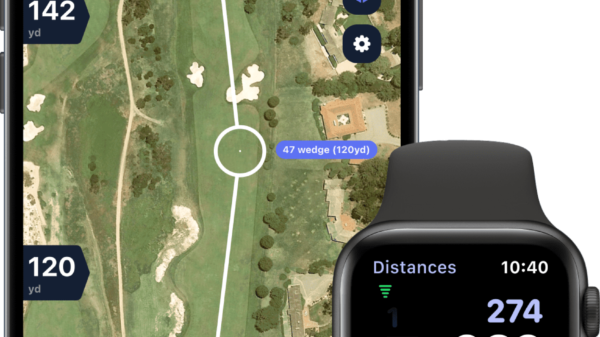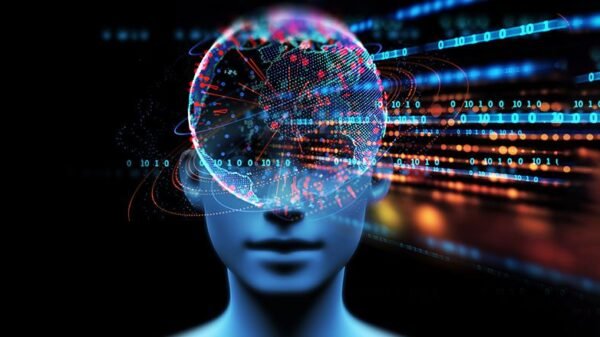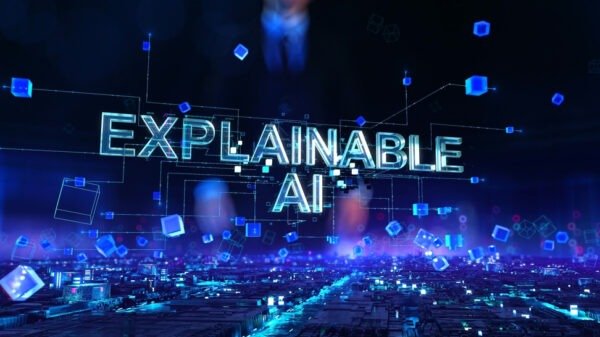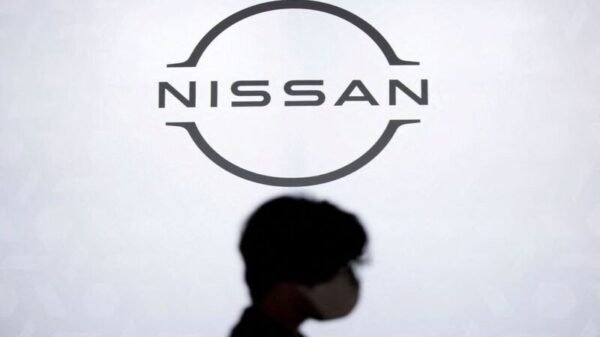Reinforcement learning and training AI: Teaching agents to solve problems
Step into the digital arena, where machines learn through experience, algorithms evolve through interaction, and AI agents master the art of problem-solving. In the mesmerising realm of ‘Reinforcement Learning and Training AI,’ the future unfolds as technology and curiosity entwine in a symphony of innovation.
Key takeaways:
- Reinforcement Learning: AI agents learn by interacting with their environment and adapting strategies over time.
- Core Components: Agents, environment, and rewards form the foundation of reinforcement learning.
- Policy learning: AI agents learn decision-making strategies to maximise rewards.
- Ethics Matter: Ethical considerations guide AI’s decisions, ensuring alignment with human values.
- Diverse Applications: Reinforcement learning impacts gaming, business, finance, healthcare, drug discovery, and robotics.
- Tangible AI: AI enters the physical world through robotics, manipulating and navigating the environment.
In a world where artificial intelligence (AI) is ceaselessly evolving, one profound aspect stands out: the art of problem-solving. Picture this: an AI agent, akin to a tenacious problem-solving prodigy, navigating its digital realm, deciphering puzzles, and making decisions that mirror human intuition. This is the power of reinforcement learning, a cornerstone of AI advancement that grants machines the ability to solve problems through experience and exploration.
Think of AI as a bright-eyed student, eager to learn and grapple with new challenges. Reinforcement learning (RL), the technique that underpins this student’s growth, brings to mind an intricate dance of interactions between the AI, its environment, and the rewards it garners for its actions. It’s like watching a ballet unfold in the digital sphere—each graceful move is a step towards refining the AI’s decision-making prowess.
At the heart of this dance lie fundamental components—states, actions, and rewards—each note resonating with a specific purpose. The agent, our virtuoso, takes actions, probes its environment, and reaps rewards, gradually composing a symphony of knowledge that empowers it to conquer increasingly complex challenges.
But as with any performance, there’s a delicate balance to be struck. Exploration, akin to a daring leap on the dance floor, opens up new avenues of learning. Exploitation, a calculated move, refines existing strategies. Together, they orchestrate a harmonious rhythm that shapes the AI’s learning trajectory.
In this article, we embark on a journey to unravel the layers of reinforcement learning and to fathom how AI is taught to solve problems. From formulating conundrums as RL puzzles to the ingenious design of rewards that guide AI decisions, we traverse the labyrinthine corridors of policy learning and delve into the intricacies of training techniques. As we delve deeper, we uncover the challenges that cast shadows on this unfolding narrative, from the enigmatic realm of sparse rewards to the quest for optimal sample efficiency.
Yet this is more than just a tale of algorithms and data. It’s a reflection of our collective aspiration to imbue AI with the innate human quality of problem-solving. As AI agents shine in the realms of gaming, robotics, business, and even healthcare, we witness their transformation from naive learners to proficient problem solvers. Each pixel, each line of code, stands as a testament to our pursuit of creating digital virtuosos.

Defining the Dance: Unveiling the Enigma of Reinforcement Learning
As we step into the realm of artificial intelligence, we find ourselves amidst a captivating dance—a dance that embodies the essence of problem-solving in the digital age. This dance, my dear readers, is none other than “reinforcement learning” (RL), a symphony of interactions and calculations that propels AI agents toward a state of mastery over complex challenges.
Let’s draw back the curtain and introduce the cast. Imagine an AI agent as the protagonist, a curious entity traversing a dynamic landscape known as the environment. Here, actions are its footsteps, and states are the coordinates of its position, defining the scenery around it. Every action, each step taken, sends ripples through the environment, and the AI awaits the applause of its performance—the rewards, meticulously assigned based on the outcomes of its actions.
Ah, but here’s where the intrigue unfurls. The AI, akin to a student of life, yearns not only for rewards but also craves knowledge. And so, the agent embarks on a quest, a dance between two partners: exploration and exploitation.
Exploration is the daring improvisation, the leap into the unknown. It’s akin to a ballerina pirouetting into uncharted territories, revealing hidden pathways that lead to potential treasures. Our AI student takes calculated risks, sampling new actions to glean insights and broaden its understanding of the environment.
Exploitation, on the other hand, is the art of refinement. It’s the masterful execution of well-practiced moves and the consolidation of knowledge into effective strategies. With each twirl, the AI agent optimises its decisions, guided by the allure of high rewards and the wisdom of its past experiences.
A Kaleidoscope of Components
To unravel this intricate dance, let’s spotlight the key components that make up the grand performance of reinforcement learning:
- Agent: Our central character, the AI agent, is the conductor of this symphony. It navigates the complex terrain, taking actions and reaping rewards as it seeks to unravel the enigma of the environment.
- Environment: The stage upon which our dance unfolds, the environment encapsulates the challenges and opportunities that shape the AI’s learning journey. It responds to the agent’s actions and provides the canvas for the agent’s exploration.
- States: These are the coordinates on the dance floor, the snapshots of the environment that capture its current state. The agent interprets these states and makes decisions based on them.
- Actions: Each step taken by our agent and each choice it makes constitutes an action. These actions determine the agent’s interaction with the environment and influence the unfolding narrative.
- Rewards: Ah, the applause that resonates through the halls of learning! Rewards are the feedback that the agent receives based on its actions. These rewards shape the agent’s preferences and guide its quest for optimal decision-making.
- Policies: Think of policies as the choreography, the meticulously crafted sequence of actions that the agent follows. A policy is the AI’s strategy, its blueprint for selecting actions based on the states it encounters.
- Value Functions: These are the agents’ critics, the evaluators of actions. Value functions assign a measure of goodness to states or state-action pairs, guiding the agent toward favourable outcomes.
Navigating the Labyrinth: Decoding the Key Terminology of Reinforcement Learning
Ah, dear readers, as we delve further into the realm of AI, we find ourselves entwined in a tapestry of perplexing terms and tantalising concepts. The symphony of reinforcement learning (RL) continues, and our next movement leads us to a crescendo of understanding as we decipher the key terminology that orchestrates this enigmatic dance.
Step onto the stage where the AI agent takes centre spotlight, ready to interpret a lexicon that shapes its destiny:
- Exploration and Exploitation: The Ballet of Choices
Imagine a ballroom, its polished floors echoing with anticipation. Here, the agent faces a pivotal choice: should it follow the familiar path of exploitation, reaping the rewards it knows, or should it cast its gaze toward exploration, venturing into uncharted territories for potentially greater riches? The dance of RL is a delicate balance between these two, where the agent pirouettes between certainty and curiosity, revealing an exquisite choreography of decisions.
- Policy Optimization: Crafting the Choreography
The heart of performance lies in policy optimization. This is where our AI protagonist refines its steps, crafting a sequence of actions that define its strategy. Just as a choreographer meticulously arranges movements to convey emotions, the AI constructs policies to maximise cumulative rewards. With each iteration, the policy evolves, shaping the AI’s behaviour and guiding its journey.
- Value Functions: The Critics’ Verdict
Enter the critics of our theatrical analogy—the value functions. These evaluators assign a score to each state or action, casting their judgement on the agent’s choices. Much like critics shaping the perception of an art piece, value functions influence the AI’s decision-making, steering it towards states of higher value and refining its grasp of the environment.
- Q-Learning: Unraveling the Puzzle
Here, we introduce a puzzling term: Q-learning. Imagine our AI as a detective, solving the riddle of the environment’s mysteries. Through Q-learning, the agent estimates the expected rewards of taking a specific action in a given state. It’s like deciphering clues to uncover the hidden treasures of optimal decision-making.
- Exploration Strategies: The Daring Gambits
Picture a gambit on a chessboard—exploration strategies are the daring gambits of RL. These techniques dictate the AI’s choices as it navigates between exploration and exploitation. From the alluring allure of epsilon-greedy tactics to the enigmatic intricacies of Boltzmann exploration, these strategies influence the agent’s every move, shaping its exploration of the vast problem-solving landscape.
Crafting Enigmas: Unraveling Problem Formulation in Reinforcement Learning
Greetings, curious minds! As we venture deeper into the labyrinth of artificial intelligence, we stumble upon a mesmerising act within the grand theatre of reinforcement learning. The spotlight now illuminates the process of problem formulation, an enigmatic dance where AI agents take centre stage, poised to unravel complex conundrums through calculated steps of exploration and exploitation.
Imagine, if you will, a tapestry of challenges spread across the digital expanse—these are the problems waiting to be solved, the puzzles yearning for AI’s embrace. In this intricate performance, each challenge transforms into a tantalising RL task, a stage for our AI protagonist to showcase its problem-solving prowess.
Here’s the magic: formulating problems as RL tasks is akin to transforming an abstract idea into a tangible masterpiece. Much like an artist’s brush strokes translating imagination onto canvas, problem formulation bridges the gap between the conceptual and the actionable. Real-world scenarios, from game playing to robotics, are deftly woven into the fabric of RL, presenting AI agents with scenarios that mirror human challenges.
Defining the Puzzle Pieces
Let’s peek behind the curtain and unveil the mechanics of this formulation:
- State Space and Action Space: Painting the Canvas
The stage is set with the state space, a spectrum of possible conditions in which the AI agent finds itself. Each state is like a brushstroke, contributing to the masterpiece’s intricate details. Then comes the action space, a gallery of choices at the agent’s disposal, each action a potential brushstroke that shapes the evolving scene.
- Rewards: A Symphony of Motivation
Every masterpiece requires motivation, and in real life, that motivation is the reward. This is the applause that echoes through the theatre of learning, guiding the AI’s decisions. Just as an artist seeks approval through applause, the AI chases rewards, striving to optimise its strategy and enhance its problem-solving finesse.
- Markov Decision Process (MDP): The Choreographer’s Blueprint
The grand choreographer of this dance is the Markov Decision Process (MDP). Like a meticulously crafted blueprint, the MDP outlines the steps of the AI’s journey. It defines the states, actions, rewards, and transition probabilities, orchestrating a narrative that unravels through the AI’s interactions with the environment.
The Act of Transformation
Picture a magician transforming the ordinary into the extraordinary—that’s what problem formulation accomplishes. It’s the wizardry that takes real-world complexities and turns them into structured challenges for AI agents to conquer. Through this act, AI evolves from a mere observer to an active participant in the grand dance of problem-solving.
The Ongoing Odyssey
As we conclude this glimpse into the realm of problem formulation, we invite you to ponder the artistry of converting dilemmas into opportunities. Just as a puzzle takes shape, one piece at a time, AI agents learn to assemble solutions through exploration, guided by rewards and motivated by the thrill of unravelling mysteries.
A Tapestry of Temptation: Weaving the Intricacies of Reward Design in Reinforcement Learning
Ah, wanderers of the digital cosmos, as we continue our odyssey through the realm of artificial intelligence, we stumble upon a beguiling masterpiece: the art of reward design. This act, dear readers, is a mesmerising blend of psychology, strategy, and creativity, where AI agents, like cunning artisans, sculpt the very essence of motivation to navigate the intricate maze of reinforcement learning.
Imagine, if you will, a captivating melody that lures a traveller deeper into an enchanting forest. In the world of AI, rewards play this melodic role. These enticing cues serve as the carrot on the proverbial stick, enticing AI agents to embark on a journey of exploration, making decisions that inch them closer to the symphony of optimal problem-solving.
Delve beneath the surface, and you’ll discover that rewards are more than just glittering baubles; they are a reflection of the AI’s desires and objectives. Like a siren’s song, rewards beckon AI agents to traverse states and execute actions that amplify their cumulative treasures. The art lies in crafting these rewards, each note harmonising with the agent’s goals and steering it through the intricate dance of problem-solving.
Unveiling the Palette
So, how does one concoct this tantalising elixir of motivation? Behold the palette of reward design:
- Immediate vs. Delayed Gratification: A Balancing Act
Picture a choice between an instant delicacy and a sumptuous feast yet to come. Reward design confronts a similar dichotomy – the immediate gratification of small, frequent rewards versus the delayed gratification of larger, long-term gains. Striking the right balance shapes the agent’s learning journey, guiding it through a symphony of calculated decisions.
- Sparse Rewards: Navigating the Labyrinth
Ah, but there’s a twist in the tale – the enigmatic challenge of sparse rewards. Imagine a treasure map with few landmarks – this scarcity of feedback creates ambiguity for AI agents. Reward design steps in as the cartographer, crafting intermediary rewards that illuminate the path, revealing insights and fostering effective learning.
- Reward Shaping: A Stroke of Genius
Consider a sculptor chiselling away to reveal a hidden masterpiece – that’s the essence of reward shaping. Here, AI designers wield creativity to restructure rewards, simplifying complex tasks and encouraging the agent to conquer challenges step by step. This artful manipulation reshapes the learning landscape, ensuring that the AI’s dance of exploration and exploitation is both graceful and rewarding.
Embarking on the Journey: Unravelling the Enigma of Policy Learning in Reinforcement Learning
Dear travellers of the digital realm, as we continue our expedition through the landscapes of artificial intelligence, we stumble upon a realm of captivating complexity – the realm of policy learning. In this act, AI agents, like eager apprentices, don the robes of decision-makers, engaging in a ballet of exploration and refinement as they unravel the intricate art of optimal problem-solving.
Imagine, if you will, a grand masquerade ball, where every move is a decision, every twirl an action. This is the essence of policy learning, where AI agents step onto the dance floor of possibilities, guided by strategies that mould their behaviour in the theatre of reinforcement learning.
Defining the Choreography
To fathom the essence of policy learning, let’s illuminate the stages of this captivating choreography:
- Value-Based Methods: The Oracles of Optimization
Consider the image of an oracle, whispering secrets of wisdom. In the realm of policy learning, value-based methods play this role. These techniques evaluate the potential of states and actions, assigning a measure of value that guides the agent’s choices. Just as an oracle foretells the future, value-based methods illuminate the path to optimal strategies.
- Policy-Based Methods: The Symphony of Strategies
Imagine a maestro conducting an orchestra, each instrument playing a unique tune. In policy learning, policy-based methods are the instruments that shape the AI agent’s symphony of actions. Here, the agent directly refines its policy, optimising its strategy through trial and error. It’s a dance of continuous adaptation, where every step refines the choreography.
- Actor-Critic Approaches: The Mentor and Protege
Visualise the scene of a master guiding a protege’s training. In actor-critic approaches, the AI agent assumes dual roles – the actor enacts the policy, while the critic evaluates its performance. This dynamic duo engages in a dance of refinement, with the critic’s feedback sculpting the actor’s movements, resulting in an ever-improving performance.
Navigating the Complex Terrain
Ah, but the journey is not without its twists and turns. Policy learning presents a labyrinthine landscape where challenges abound, and techniques intermingle:
– Exploration Strategies: These daring gambits influence the agent’s exploration-exploitation balance, guiding it through the delicate pas de deux of curiosity and optimization.
– Experience Replay: Imagine a theatre where past performances are replayed for refinement. In policy learning, experience replay allows the agent to revisit past actions, learning from its own history and fine-tuning its strategies.
– Transfer Learning and Generalization: Much like a dancer’s ability to adapt to new routines, transfer learning enables AI agents to apply learned policies to new tasks, fostering a sense of versatility and adaptability.
Unravelling the Unknown: Navigating the Maze of Exploration Strategies in Reinforcement Learning
Greetings, fellow explorers of the digital frontier! As we journey deeper into the heart of artificial intelligence, we find ourselves at a crossroads of curiosity and calculation. This is the realm of exploration strategies, a captivating dance where AI agents waltz between venturing into the unknown and capitalising on the known to unravel the enigmatic world of reinforcement learning.
Picture a map stretching across uncharted territory, dotted with unexplored paths and hidden treasures. This map is the state space, a realm of infinite possibilities where our AI adventurers navigate. The question that beckons is not just “where to go” but “how to go.” This is where exploration strategies unfurl their banners, guiding AI agents to chart a course through the labyrinthine landscape.
Ah, but the path to mastery is not a straightforward march. It’s a delicate balance between curiosity and certainty, a symphony where exploration and exploitation are the harmonious notes that shape an AI agent’s journey.
– Exploration is the daring leap into uncharted territories, the audacious gamble to unveil hidden gems. It’s the inquisitive glance towards the horizon, where novelty awaits. From the daring gambit of the epsilon-greedy strategy to the tantalising allure of the Boltzmann exploration, each technique is a brushstroke on the canvas of curiosity.
– Exploitation, on the other hand, is the calculated move, the refined step based on past experiences. It’s the sage recognition of what works, akin to a seasoned traveller retracing familiar paths. The AI agent, like an astute traveller, learns to balance exploration and exploitation, making informed decisions while staying open to new avenues.
A Tapestry of Techniques
As we peel back the layers of exploration strategies, we encounter a tapestry of techniques:
– Epsilon-Greedy: Imagine a coin flip, where heads lead to exploration and tails to exploitation. The epsilon-greedy strategy embodies this principle, with a dash of randomness. It’s the daring toss of the coin that decides whether to explore the unfamiliar or stick to the tried-and-true.
– Boltzmann Exploration: Here, the agent’s choices are akin to the rise and fall of temperature. Just as matter transforms with heat, AI agents select actions based on probabilities that fluctuate like a thermal dance. It’s a mesmerising technique where exploration’s tempo waltzes to the rhythm of uncertainty.
Rewriting the Past: Unveiling the Mysteries of Experience Replay in Reinforcement Learning
Greetings, fellow seekers of knowledge, as we continue our expedition into the intricate tapestry of artificial intelligence. Today, we step into a realm that is equal parts time travel and strategic refinement – the realm of experience replay. Here, dear readers, we unravel the very fabric of learning, as AI agents transcend the present, revisiting their past decisions to shape a future of optimal problem-solving.
Imagine, if you will, a grand library of experiences, where every action, every state visited by our AI voyagers, is meticulously recorded. This library, the experience replay buffer, becomes a treasure trove of insights, a hall of echoes that AI agents can revisit time and again.
In this symphony of learning, experience replay introduces a new note, a novel technique that enhances the process of policy refinement. Let us illuminate the stages of this captivating orchestration:
- Revisiting the Past: A Theatrical Twist
Think of a seasoned actor rehearsing their lines before the grand performance. Similarly, experience replay allows AI agents to step back in time, revisiting past decisions to refine their strategies. This technique introduces an element of learning from history, where agents, like diligent scholars, pore over their experiences to uncover patterns and insights.
- Breaking the Shackles of Correlation
Ah, but the tale takes a fascinating turn. Experience replay doesn’t merely offer a stroll down memory lane; it liberates AI agents from the chains of correlation. Imagine a theatre with multiple actors performing in tandem. Correlation here is like a dance between these actors, each influencing the other’s moves. Experience replay interrupts this dance, allowing the AI to learn from a diverse array of experiences, decoupling the present from the past.
- Fostering Stable Learning: A Maestro’s Touch
Imagine a conductor leading an orchestra with a steady hand. Experience replay acts as this maestro, stabilising the learning process. It curates a balanced curriculum for the AI agent, presenting a diverse array of experiences that contribute to robust, well-rounded learning. This technique ensures that the AI’s education is not skewed by the immediate, but rather nurtured by a holistic view of its journey.
Bridging Realms: Unleashing the Magic of Transfer Learning and Generalization in Reinforcement Learning
Greetings, fellow wanderers in the realm of artificial intelligence. Today, our voyage takes us to a place where boundaries blur, and AI agents morph from specialised experts to versatile learners – the realm of transfer learning and generalisation. In this act, we embark on a quest of adaptation and metamorphosis, as AI agents carry their knowledge across domains, unfurling the tapestry of problem-solving in the digital age.
Imagine, if you will, a seasoned traveller setting foot in a foreign land. The languages and landscapes may differ, but the essence of navigation remains. This is the crux of transfer learning and generalisation, where AI agents embark on a journey to leverage their existing expertise to conquer new frontiers.
The heart of this exploration lies in transfer learning, an intricate dance where AI agents distil their learning from one domain and translate it into another. Let us traverse the path of this captivating transformation:
- Learning from the Source: A Glimpse into Transfer
Picture a painter mastering the brushstrokes of one art form, then seamlessly adapting those skills to another canvas. Similarly, transfer learning enables AI agents to borrow insights from a source domain and apply them to a target domain. It’s a dance of abstraction and adaptation, where the agent’s mastery in one realm becomes a foundation for conquering new challenges.
- The Alchemy of Generalization: Unveiling the Magic
Consider the marvel of a magician, conjuring illusions that transcend mere perception. Generalisation in AI mimics this magic, allowing agents to grasp overarching principles that span various scenarios. Here, the agent learns not just the specific moves but the underlying melody, a symphony of understanding that echoes across different settings.
- Challenges and Triumphs: The Cross-Domain Odyssey
Ah, but the path of transfer learning and generalisation is not without its hurdles. Like a traveller encountering unexpected terrain, AI agents face challenges in bridging domains. The skill lies in recognizing the nuances that carry over and the nuances that diverge. It’s a tale of navigating the currents of commonality while riding the waves of distinction.
Cracking the Code: Deciphering the Enigma of Reward Sparsity and Shaping in Reinforcement Learning
Greetings, fellow seekers of knowledge, as we delve further into the intricate realm of artificial intelligence. Today, our quest leads us to the heart of complexity – the realms of reward sparsity and shaping. In this chapter of our journey, we unveil the intricate dance of incentives, where AI agents waltz through challenges both abundant and elusive, guided by a symphony of rewards that shape their path to problem-solving mastery.
Imagine, if you will, a treasure map scattered with a scattering of markers, where riches are rare, and the path is cryptic. This, dear readers, is the realm of reward sparsity, a puzzle where AI agents tread cautiously, deciphering cues and charting courses amidst the scarcity of feedback.
But fret not, for every puzzle offers a solution waiting to be unearthed. The art of reward shaping is our key to unravelling this enigma. It is here that AI agents transform from mere learners to strategic designers, orchestrating incentives to guide their exploration and exploitation, making every step a piece of a grander puzzle.
Reward sparsity, much like an intricate labyrinth, presents a challenge where the answer is elusive. But every challenge breeds innovation, and AI designers have risen to the occasion:
– Temporal Credit Assignment: Imagine an actor receiving applause long after their performance ends. In AI, temporal credit assignment is the technique that attributes rewards to the actions that led to them, even if time separates the two. It’s a way for agents to connect the dots, to link their decisions with delayed outcomes.
– Curriculum Learning: Just as a student progresses through lessons of increasing complexity, curriculum learning is the art of designing a learning path for AI agents. It’s a dance where simple tasks become the building blocks for mastering intricate challenges, gradually shaping the AI’s problem-solving abilities.
The Art of Shaping
Reward shaping, dear readers, is the art of moulding the AI agent’s environment. Here, AI designers wield their creativity to sculpt rewards that nudge the agent toward desired behaviours:
– Potential-Based Shaping: Imagine sculpting clay, shaping its contours into an envisioned form. Potential-based shaping is a similar act, where designers craft intermediary rewards that guide the agent towards a state of potential value. It’s a dance of nudging, encouraging the AI’s steps towards solutions.
– Inverse Reinforcement Learning: Consider the notion of learning from the decisions of a master. Inverse reinforcement learning embodies this, as the AI agent strives to infer the underlying reward structure from an expert’s choices. It’s a puzzle where the AI learns to reverse-engineer the artistry of decision-making.
Cracking the Code: Unveiling the Enigmatic Dance of Sample Efficiency in Reinforcement Learning
Greetings, fellow seekers of wisdom, as we delve deeper into the intricate web of artificial intelligence. Today, our expedition takes a curious turn, leading us to the heart of optimization – the enigmatic world of sample efficiency. In this chapter of our exploration, we uncover the art of learning from limited experiences, where AI agents dance through a tapestry of interactions, honing their problem-solving prowess with calculated steps.
The Quest for Mastery
Imagine, if you will, an apprentice learning a craft, guided by a handful of masterful strokes. This is the essence of sample efficiency, where AI agents embark on a quest for mastery with the limited palette of experiences at their disposal.
Diving into the Depths
But how, you might wonder, can AI agents learn so much from so little? The answer lies in the delicate dance of sample efficiency, where every interaction, every decision, carries weight. Let us illuminate the stages of this captivating performance:
- Learning from Scarcity: The Challenge
Consider a sculptor chiselling a masterpiece from a block of marble. Similarly, AI agents sculpt knowledge from limited data. This challenge of learning with few experiences is the crux of sample efficiency, where each interaction becomes a precious brushstroke, contributing to the agent’s evolving understanding.
- Exploration Strategies Revisited: A Strategic Twist
Recall our exploration of exploration strategies, where AI agents balance curiosity and refinement. In the realm of sample efficiency, these strategies take on new meaning. Every exploration, every venture into the unknown, becomes a calculated decision, aimed at maximising the learning potential from each interaction.
The Techniques of Elegance
In this quest for efficiency, AI designers wield a toolkit of techniques to maximise learning from sparse interactions:
– Bootstrapping: Imagine a student using notes to supplement their understanding of a complex subject. In AI, bootstrapping is akin to creating insightful notes from limited experiences. These notes, or value estimates, provide the agent with a scaffolding of understanding to navigate the terrain of learning.
– Transfer Learning and Generalization: Just as a musician applies their skills across different instruments, transfer learning and generalisation allow AI agents to extend their learning from one scenario to another. It’s a dance of versatility, where insights gained in one context become tools to conquer another.
Navigating the Moral Nexus: Unravelling Ethical Considerations in Reinforcement Learning and AI
Greetings, fellow travellers of the digital realm, as we continue our expedition through the ever-evolving landscapes of artificial intelligence. Today, our path takes us to a crossroads of complexity and conscience – the realm of ethical considerations in the realm of reinforcement learning. In this chapter of our journey, we untangle the intricate web of ethical dilemmas that arise as AI agents traverse the terrain of problem-solving.
Imagine, if you will, a conductor guiding an orchestra through an intricate symphony. In the world of AI, ethics plays this role, shaping the harmonious interactions between technology and humanity.
The Spectrum of Dilemmas
The journey into ethical considerations is not a straightforward march; it’s a dance through a spectrum of complexities and contradictions. Let us illuminate the stages of this captivating ballet:
- Bias and Fairness: A Delicate Choreography
Consider a delicate dance, where every step is a decision, and every decision echoes with consequences. In AI, the issue of bias and fairness takes centre stage. AI agents, much like impressionable dancers, learn from data, and if this data is tainted with bias, it mirrors the steps of its creators. The challenge lies in harmonising these steps, ensuring that AI’s decisions reflect not just historical patterns but ethical aspirations.
- Transparency and Accountability: The Spotlight on Responsibility
Imagine a performance on a grand stage, watched by a discerning audience. In the realm of AI, transparency and accountability form the audience’s gaze, holding technology accountable for its decisions. As AI agents traverse the paths of learning, ethical considerations demand a spotlight on transparency, ensuring that the rationale behind decisions is not shrouded in darkness.
The Design of Ethical Choreography
In this dance of ethics, AI designers wield a toolkit of techniques to ensure that AI agents tango with morality:
– Fairness-Aware Learning: Imagine a choreographer ensuring that every dancer has their moment in the spotlight. Fairness-aware learning in AI ensures that decisions are unbiased and equitable, orchestrating a performance where every interaction respects diversity and dignity.
– Interpretable Models: Just as an audience seeks to understand the emotions conveyed by dancers, interpretable models enable humans to decipher the AI’s decisions. It’s a choreography of clarity, where AI’s actions are not just outcomes but stories that can be comprehended.
Unveiling the Virtual Odyssey: Exploring the Intricacies of Gaming and Game AI in Reinforcement Learning
Greetings, fellow adventurers of the digital realm, as we embark on a quest into the captivating domain of artificial intelligence. Our journey today leads us to a realm that seamlessly blends strategy and spectacle – the world of gaming and game AI. In this chapter of our exploration, we venture into the heart of interactive entertainment, where AI agents don virtual armour to tackle challenges that mirror the complexities of the human experience.
Imagine, if you will, a grand arena where pixels morph into landscapes, and digital characters breathe life into the screen. This is the immersive world of gaming, a dynamic theatre where AI agents don the roles of both player and strategist, engaging in a symphony of decision-making that traverses a spectrum of challenges.
Gaming: More Than Meets the Eye
Gaming is more than just entertainment; it’s a sandbox of learning and innovation. As AI agents step onto the pixelated stage, they confront a multitude of challenges, from mastering the dynamics of a virtual chessboard to navigating the tactical chaos of a battle royale arena. Let us illuminate the stages of this captivating performance:
- Reinventing Play: The Essence of Game AI
Consider a puppeteer pulling the strings of marionettes, orchestrating an intricate dance. In the realm of gaming, game AI takes on this role, shaping the behaviour of non-player characters and creating immersive experiences. It’s the art of crafting opponents that are both strategic adversaries and engaging companions.
- Learning from Pixels: A Dance of Adaptation
Imagine a chess prodigy honing their skills against a virtual opponent. Game AI involves reinforcement learning, where AI agents learn by interacting with the game environment. Through a symphony of exploration and exploitation, these agents adapt their strategies, refining their moves with every pixelated encounter.
The Quest for Mastery
In this virtual odyssey, AI designers wield a toolkit of techniques to ensure that game AI agents master the dance of gaming:
– Monte Carlo Tree Search (MCTS): Imagine a strategist exploring a multitude of possible scenarios before making a move. MCTS embodies this principle, simulating numerous game trajectories and selecting the most promising path. It’s a dance of calculated decision-making, a tango of exploration and evaluation.
– Deep Reinforcement Learning: Just as a virtuoso musician refines their technique through practice, deep reinforcement learning allows AI agents to learn from a continuous stream of gameplay data. It’s a symphony of training, where neural networks fine-tune their understanding through a process akin to continuous practice.
The Ongoing Odyssey
Venturing into the Tangible: Unleashing the Power of Robotics and Autonomous Systems in Reinforcement Learning
Greetings, intrepid explorers of the digital age, as we continue our odyssey through the captivating tapestry of artificial intelligence. Our expedition takes a transformative turn today, leading us from the ethereal realms of code and algorithms to the realm of tangible action – the domain of robotics and autonomous systems. In this chapter of our journey, we delve into the fusion of AI and physicality, where machines become the embodiment of problem-solving prowess.
The Tangible Symphony
Imagine, if you will, a symphony where algorithms metamorphose into mechanical movements. This is the orchestra of robotics, a stage where AI agents orchestrate the dance of physical entities, weaving together decisions and actions in a symphony of automation.
The Rise of the Machines
In the realm of robotics, AI transcends lines of code to manifest in the realm of the physical. Let us illuminate the stages of this captivating transformation:
- From Pixels to Motion: The Convergence
Consider a virtuoso pianist breathing life into a musical composition. In robotics, AI breathes life into machines, where sensors become senses, and actuators become actions. This convergence, the essence of robotics and autonomous systems, empowers machines to navigate, manipulate, and interact with the tangible world.
- Learning through Interaction: A Ballet of Adaptation
Imagine a dancer learning to move in harmony with their partner. In robotics, reinforcement learning is akin to this dance, where AI agents learn through interaction with the environment. This dance of adaptation is not limited to virtual realms; it extends to the manipulation of physical objects, navigation through spaces, and tasks that echo the nuances of human capabilities.
The Choreography of Progress
In this dance of automation, AI designers wield a toolkit of techniques to ensure that robots and autonomous systems pirouette with precision:
– Model-Based Reinforcement Learning: Imagine a choreographer envisioning movements before a dance is performed. Model-based reinforcement learning involves creating a simulated model of the environment, allowing AI agents to plan and refine actions before executing them in the real world. It’s a ballet of anticipation, where AI designs its steps before the physical act.
– Inverse Dynamics Learning: Just as a dancer learns to control their movements, inverse dynamics learning enables robots to understand the relationship between their actions and the resulting motion. It’s a dance of insight, where robots discern the forces and torques necessary to execute actions with finesse.
Cracking the Code of Commerce: Unveiling the Dynamics of Business and Finance in Reinforcement Learning
Greetings, curious minds of the digital age, as we embark on a captivating journey through the intricate tapestry of artificial intelligence. Our voyage takes a profound turn today, leading us to the epicentre of global transactions and economic currents – the realm of business and finance. In this chapter of our exploration, we delve into the fusion of AI and commerce, where algorithms wield power in the complex dance of decision-making.
The Marketplace Symphony
Imagine, if you will, a bustling marketplace, where fortunes are won and lost with every transaction. This is the stage of business and finance, a dynamic arena where AI agents take centre stage, orchestrating a ballet of strategies that ripple through economies and shape the destinies of companies.
Unleashing AI in Commerce
In the realm of business and finance, AI emerges as a strategic player in the art of decision-making. Let us illuminate the stages of this captivating transformation:
- The Data-Driven Conundrum: Navigating Complexity
Consider a financial analyst deciphering mountains of data to spot trends. In the world of AI, business and finance involves processing colossal data streams, extracting insights, and forecasting market dynamics. This convergence transforms AI agents into market soothsayers, guiding decisions with the precision of a maestro’s baton.
- Adaptive Trading: The Dance of Optimization
Imagine a choreographer creating a sequence of movements that adapts to the rhythm of the music. In the context of finance, adaptive trading is akin to this dance, where AI agents continuously adjust trading strategies based on real-time market fluctuations. It’s a ballet of optimization, where algorithms make swift decisions that could determine profit or loss.
The Calculated Symphony
In this dance of commerce, AI designers wield a toolkit of techniques to ensure that algorithms harmonise with the financial landscape:
– Portfolio Management: Imagine a conductor orchestrating a symphony of instruments. Portfolio management in AI involves balancing investments across a diverse array of assets, much like a conductor harmonising musical notes. It’s a dance of diversification, where algorithms allocate resources to optimise returns while minimising risks.
– Algorithmic Trading: Just as a dancer anticipates movements to stay in sync with partners, algorithmic trading anticipates market shifts and executes trades with precision. It’s a dance of speed, where AI agents navigate markets with split-second decisions, fueled by complex strategies.
The Ongoing Financial Ballet
Pioneering the Medical Frontier: Unravelling the Nexus of Healthcare and Drug Discovery in Reinforcement Learning
Greetings, intrepid seekers of knowledge, as we embark on a profound journey through the captivating world of artificial intelligence. Today, our voyage guides us through a realm where science and technology converge to redefine the frontiers of human well-being – the realm of healthcare and drug discovery. In this chapter of our exploration, we delve into the marriage of AI and medicine, where algorithms hold the promise of revolutionising diagnosis, treatments, and the very landscape of pharmaceutical breakthroughs.
The Healing Symphony
Imagine, if you will, a symphony of cells, molecules, and genetic codes, where health and disease engage in an intricate dance. This is the orchestra of healthcare and drug discovery, a tapestry where AI agents wield their analytical batons to compose melodies of healing and hope.
Unleashing AI in Medicine
In the realm of healthcare and drug discovery, AI emerges as a potent ally in the quest for better health. Let us illuminate the stages of this captivating transformation:
- From Data to Diagnosis: Unravelling Complexity
Consider a master detective deciphering clues to solve a mystery. In the realm of AI, healthcare and drug discovery involves untangling the complexities of medical data to unearth patterns and insights. This fusion empowers AI agents to assist medical professionals in making accurate diagnoses, guiding treatment plans, and enhancing patient care.
- Drug Discovery: The Dance of Molecules
Imagine a chemist exploring the properties of molecules to engineer new drugs. In the context of drug discovery, AI engages in a dance of molecular exploration, analysing vast databases to predict the potential of compounds for drug development. It’s a choreography of prediction, where algorithms assist researchers in identifying promising candidates for novel therapies.
The Cure-Conscious Ballet
In this dance of healthcare and drug discovery, AI designers wield a toolkit of techniques to ensure that algorithms align with the medical mission:
– Clinical Decision Support: Imagine a compass guiding a ship through treacherous waters. Clinical decision support in AI serves a similar role, offering insights that steer medical professionals towards informed decisions. It’s a ballet of guidance, where algorithms aid doctors in navigating the complexities of diagnoses and treatment plans.
– Virtual Screening: Just as a researcher sifts through countless samples to find a hidden gem, virtual screening in AI involves simulating interactions between molecules and drug targets. It’s a ballet of simulation, where AI agents expedite the process of identifying potential drugs, accelerating the journey from lab to patient.
Embarking on the AI Odyssey: Charting the Course of Future Prospects and Conclusions in Reinforcement Learning
Greetings, fellow travellers of the digital frontier, as we arrive at a moment of reflection and anticipation in our journey through the intricacies of artificial intelligence. Our expedition has been a symphony of exploration, unravelling the harmonies of reinforcement learning and its manifold applications. As we step into the realm of future prospects and conclusions, we stand at the precipice of a transformative age where AI’s evolution intertwines with the narrative of human progress.
The Horizon of Possibility
Imagine, if you will, a canvas where every brushstroke is a stroke of innovation, each hue a spectrum of potential. This is the landscape of future prospects, a realm where AI agents hold the promise of becoming co-creators in the grand tapestry of technological advancement.
AI in Flux: The Ongoing Evolution
The future of reinforcement learning is a tapestry woven from threads of technological prowess and human imagination. Let us cast a gaze over the horizons that beckon us forward:
- Cross-Disciplinary Renaissance: Expanding Boundaries
Consider a meeting of minds where musicians collaborate with physicists, doctors converse with engineers. In the world of AI, cross-disciplinary synergy takes centre stage, as researchers and practitioners from diverse domains collaborate to unlock new dimensions of problem-solving. The fusion of expertise creates a symphony of innovation, where AI’s applications span realms hitherto unimagined.
- Explainable AI: Unveiling the Enigma
Imagine peeling back the layers of a complex masterpiece to reveal its inner workings. In AI, the quest for explainable AI unfolds as researchers endeavour to demystify the decision-making processes of algorithms. This journey seeks to empower humans with insights into AI’s reasoning, forging a path towards trust and transparency.
- Lifelong Learning: A Symphony of Adaptation
Consider a scholar’s perpetual quest for knowledge, unbound by the confines of a classroom. In AI, the concept of lifelong learning envisions agents that evolve and adapt over time, continually refining their problem-solving abilities. This ongoing journey of growth echoes the human pursuit of wisdom, propelling AI towards a state of perpetual mastery.

































